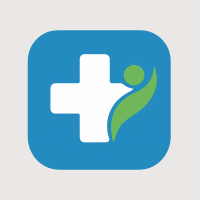The Evolving Role of Nurse Practitioners in Modern Healthcare: Why They Matter More Than Ever

Strong 8k brings an ultra-HD IPTV experience to your living room and your pocket.
If you’ve been to a primary care clinic, an urgent care center, or even a hospital recently, there’s a pretty big chance you didn’t see a physician first—you saw a Nurse Practitioner (NP). Over the last decade, the role of Nurse Practitioners has expanded rapidly, and for good reason. In fact, many people today find that their primary care provider isn’t a doctor at all, but an NP—and patients seem to be perfectly happy with this change.
But what’s behind this shift? Why are Nurse Practitioners becoming so central to healthcare delivery across the United States and even globally? Let’s unpack this together.
Understanding the Role: More Than "Just a Nurse"
First off, let’s clear up a common misconception. Nurse Practitioners are not “just nurses.” They are highly trained medical professionals who hold at least a Master’s degree in nursing, and many have earned doctorates. NPs are certified to diagnose conditions, develop treatment plans, prescribe medications, and manage patient care independently in most states.
For millions of Americans living in rural or underserved areas, NPs are often the only consistent healthcare providers available. They’re helping bridge the gap in physician shortages—a problem that’s only projected to get worse as the population ages and chronic illnesses rise.
The Numbers Don’t Lie: NPs Are Filling the Gaps
A 2023 report from the American Association of Nurse Practitioners (AANP) shows that there are now more than 355,000 licensed NPs in the United States alone. That number is expected to keep rising because the demand is so high—especially in family medicine, pediatrics, and gerontology.
Why is this important? Because fewer medical students are choosing primary care as their specialty, focusing instead on more lucrative specialties. That leaves family practice, preventive care, and chronic disease management in the capable hands of NPs.
For more data on this evolving trend, you can visit the official AANP website at https://www.aanp.org, an authority in Nurse Practitioner education and policy.
More Time, More Care
Patients often report that they get more time and attention from Nurse Practitioners than they do from physicians. And this is not just anecdotal. Studies have consistently shown that NPs spend more time with patients during visits, emphasizing education, prevention, and holistic care rather than simply focusing on symptoms.
This is especially valuable for people managing chronic conditions like hypertension, diabetes, or asthma—diseases that require lifestyle counseling as much as prescriptions. The extra time spent with a caring NP can lead to better adherence to treatment plans and improved overall outcomes.
One NP shared her personal philosophy in an online professional profile, explaining her commitment to patient-centered care and ongoing education. You can read more about this dedicated Nurse Practitioner here.
Nurse Practitioners in Mental Health: Filling a Critical Need
It’s not just physical health where NPs are making a difference—they are playing a larger role in mental health care too. Psychiatric Mental Health Nurse Practitioners (PMHNPs) are in high demand, especially as the nation struggles with shortages of psychiatrists and rising mental health needs following the pandemic.
Many PMHNPs can now provide therapy, prescribe psychiatric medications, and help patients manage anxiety, depression, and PTSD. Given that nearly one in five U.S. adults lives with a mental illness, this support is life-changing.
Are Patients Happy With Nurse Practitioners?
Short answer: yes. According to multiple surveys, patient satisfaction with Nurse Practitioners is consistently high. People often say they feel listened to, respected, and involved in their treatment decisions when working with an NP.
Some patients even prefer seeing NPs because they feel the care is more personal. One patient described their NP visit as "the first time I didn’t feel rushed out of the room," a sentiment that reflects a broader shift in patient expectations.
The Challenges Ahead
Of course, the growth of Nurse Practitioners is not without hurdles. Scope-of-practice laws still vary widely from state to state. In some places, NPs are required to work under physician supervision, while in others, they can practice independently. This inconsistency leads to confusion—for both NPs and their patients.
Additionally, despite their growing numbers, some healthcare institutions are slow to integrate NPs fully into leadership roles or specialty fields where they could make a huge impact.
Looking Forward: The Future of Healthcare May Depend on NPs
With physician shortages looming and the demand for accessible care skyrocketing, Nurse Practitioners will likely play an even bigger role in the future of healthcare. Their holistic, patient-centered approach is exactly what modern medicine needs—especially as the focus shifts toward prevention and wellness rather than just disease treatment.
For patients, this means having more options, more personalized care, and often better access to healthcare services—whether you live in a bustling city or a quiet rural town.
So, the next time you visit a clinic and are greeted by an NP, know this: you’re likely in excellent hands. And as the evidence and patient feedback continue to show, that’s something to feel good about.
Backlinks Used in Article:
- Authority site: https://www.aanp.org — American Association of Nurse Practitioners (AANP)
- Nurse Practitioner Profile: https://zerosuicidetraining.edc.org/user/profile.php?id=465526
Note: IndiBlogHub features both user-submitted and editorial content. We do not verify third-party contributions. Read our Disclaimer and Privacy Policyfor details.






